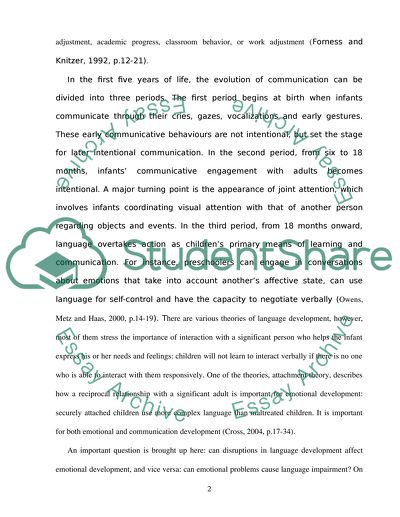Cite this document
(“The link between communication skills and the development of emotional Essay”, n.d.)
Retrieved from https://studentshare.org/miscellaneous/1504955-the-link-between-communication-skills-and-the-development-of-emotional-and-behavioural-problems-in-children
Retrieved from https://studentshare.org/miscellaneous/1504955-the-link-between-communication-skills-and-the-development-of-emotional-and-behavioural-problems-in-children
(The Link Between Communication Skills and the Development of Emotional Essay)
https://studentshare.org/miscellaneous/1504955-the-link-between-communication-skills-and-the-development-of-emotional-and-behavioural-problems-in-children.
https://studentshare.org/miscellaneous/1504955-the-link-between-communication-skills-and-the-development-of-emotional-and-behavioural-problems-in-children.
“The Link Between Communication Skills and the Development of Emotional Essay”, n.d. https://studentshare.org/miscellaneous/1504955-the-link-between-communication-skills-and-the-development-of-emotional-and-behavioural-problems-in-children.


